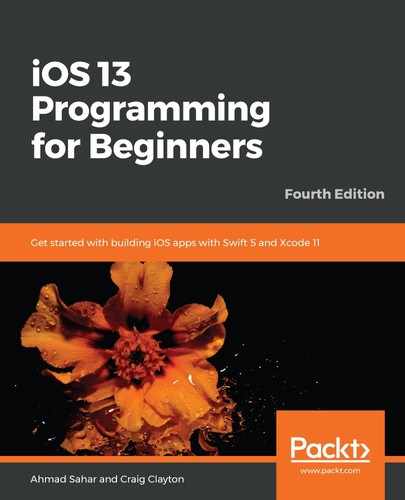Book Description
A step-by-step guide to learning iOS app development and exploring the latest Apple development tools
Key Features
- Explore the latest features of Xcode 11 and the Swift 5 programming language in this updated fourth edition
- Kick-start your iOS programming career and have fun building your own iOS apps
- Discover the new features of iOS 13 such as Dark Mode, iPad apps for Mac, SwiftUI, and more
Book Description
iOS 13 comes with features ranging from Dark Mode and Catalyst through to SwiftUI and Sign In with Apple. If you're a beginner and are looking to experiment and work with these features to create your own apps, then this updated fourth edition gets you off to a strong start. The book offers a comprehensive introduction for programmers who are new to iOS, covering the entire process of learning the Swift language, writing your own apps, and publishing them on the App Store. This edition is updated and revised to cover the new iOS 13 features along with Xcode 11 and Swift 5.
The book starts with an introduction to the Swift programming language, and how to accomplish common programming tasks with it. You'll then start building the user interface (UI) of a complete real-world app, using the latest version of Xcode, and also implement the code for views, view controllers, data managers, and other aspects of mobile apps. The book will then help you apply the latest iOS 13 features to existing apps, along with introducing you to SwiftUI, a new way to design UIs. Finally, the book will take you through setting up testers for your app, and what you need to do to publish your app on the App Store.
By the end of this book, you'll be well versed with how to write and publish apps, and will be able to apply the skills you've gained to enhance your apps.
What you will learn
- Get to grips with the fundamentals of Xcode 11 and Swift 5, the building blocks of iOS development
- Understand how to prototype an app using storyboards
- Discover the Model-View-Controller design pattern, and how to implement the desired functionality within the app
- Implement the latest iOS features such as Dark Mode and Sign In with Apple
- Understand how to convert an existing iPad app into a Mac app
- Design, deploy, and test your iOS applications with industry patterns and practices
Who this book is for
This book is for anyone who has programming experience but is completely new to Swift and iOS app development. Experienced programmers looking to explore the latest iOS 13 features will also find this book useful.
